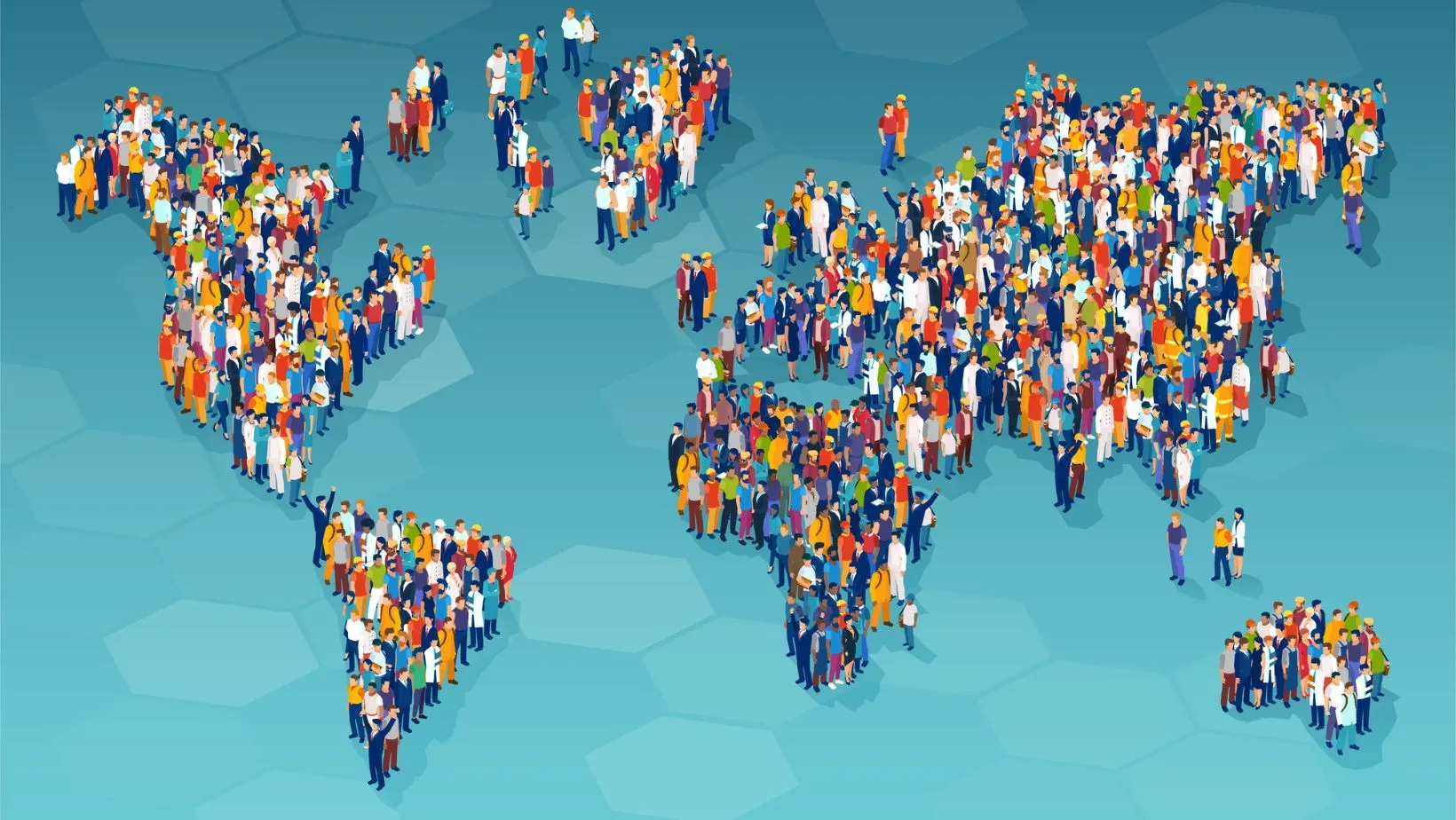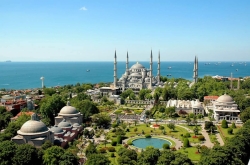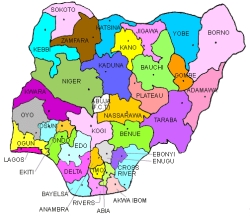Home / Blog / Travel & Geography
List of UN Member Countries by Population (2025)

The United Nations (UN) comprises 193 member countries, ranging from global population giants like China and India to small island nations such as Tuvalu and Nauru. Understanding how these countries compare by population reveals much about global demographics, influence, and development.
In this post, we present an updated list of all 193 UN member states ranked by population (2025 estimates). This ranking helps highlight how densely populated nations shape international discourse and global policy, while also recognizing the presence of smaller states with unique cultures and identities.
UN Member Countries Ranked by Population (2025 Estimates)
| Rank | Country | Estimated Population (2025) |
|---|---|---|
| 1 | India 🇮🇳 | ~1.43 billion |
| 2 | China 🇨🇳 | ~1.41 billion |
| 3 | United States 🇺🇸 | ~339 million |
| 4 | Indonesia 🇮🇩 | ~280 million |
| 5 | Pakistan 🇵🇰 | ~242 million |
| 6 | Nigeria 🇳🇬 | ~230 million |
| 7 | Brazil 🇧🇷 | ~216 million |
| 8 | Bangladesh 🇧🇩 | ~172 million |
| 9 | Russia 🇷🇺 | ~143 million |
| 10 | Mexico 🇲🇽 | ~130 million |
| 11 | Ethiopia 🇪🇹 | ~127 million |
| 12 | Japan 🇯🇵 | ~122 million |
| 13 | Philippines 🇵🇭 | ~118 million |
| 14 | Egypt 🇪🇬 | ~111 million |
| 15 | Democratic Republic of the Congo 🇨🇩 | ~104 million |
| 16 | Vietnam 🇻🇳 | ~99 million |
| 17 | Iran 🇮🇷 | ~89 million |
| 18 | Turkey 🇹🇷 | ~86 million |
| 19 | Germany 🇩🇪 | ~83 million |
| 20 | Thailand 🇹🇭 | ~71 million |
| 21 | France 🇫🇷 | ~68 million |
| 22 | United Kingdom 🇬🇧 | ~67 million |
| 23 | Tanzania 🇹🇿 | ~67 million |
| 24 | South Africa 🇿🇦 | ~61 million |
| 25 | Italy 🇮🇹 | ~59 million |
| 26 | Myanmar 🇲🇲 | ~56 million |
| 27 | South Korea 🇰🇷 | ~51 million |
| 28 | Colombia 🇨🇴 | ~52 million |
| 29 | Kenya 🇰🇪 | ~54 million |
| 30 | Spain 🇪🇸 | ~48 million |
| 31 | Ukraine 🇺🇦 | ~37 million |
| 32 | Argentina 🇦🇷 | ~47 million |
| 33 | Sudan 🇸🇩 | ~46 million |
| 34 | Uganda 🇺🇬 | ~48 million |
| 35 | Algeria 🇩🇿 | ~46 million |
| 36 | Iraq 🇮🇶 | ~45 million |
| 37 | Poland 🇵🇱 | ~37 million |
| 38 | Afghanistan 🇦🇫 | ~41 million |
| 39 | Canada 🇨🇦 | ~40 million |
| 40 | Morocco 🇲🇦 | ~37 million |
| 41 | Saudi Arabia 🇸🇦 | ~36 million |
| 42 | Uzbekistan 🇺🇿 | ~36 million |
| 43 | Peru 🇵🇪 | ~35 million |
| 44 | Angola 🇦🇴 | ~36 million |
| 45 | Malaysia 🇲🇾 | ~34 million |
| 46 | Ghana 🇬🇭 | ~34 million |
| 47 | Yemen 🇾🇪 | ~34 million |
| 48 | Mozambique 🇲🇿 | ~34 million |
| 49 | Nepal 🇳🇵 | ~31 million |
| 50 | Venezuela 🇻🇪 | ~29 million |
| 51 | Madagascar 🇲🇬 | ~30 million |
| 52 | Cameroon 🇨🇲 | ~30 million |
| 53 | Côte d'Ivoire 🇨🇮 | ~29 million |
| 54 | North Korea 🇰🇵 | ~26 million |
| 55 | Australia 🇦🇺 | ~27 million |
| 56 | Niger 🇳🇪 | ~27 million |
| 57 | Sri Lanka 🇱🇰 | ~21 million |
| 58 | Burkina Faso 🇧🇫 | ~24 million |
| 59 | Mali 🇲🇱 | ~23 million |
| 60 | Romania 🇷🇴 | ~19 million |
| 61 | Malawi 🇲🇼 | ~21 million |
| 62 | Chile 🇨🇱 | ~19 million |
| 63 | Kazakhstan 🇰🇿 | ~19 million |
| 64 | Zambia 🇿🇲 | ~20 million |
| 65 | Guatemala 🇬🇹 | ~19 million |
| 66 | Ecuador 🇪🇨 | ~18 million |
| 67 | Netherlands 🇳🇱 | ~17.8 million |
| 68 | Syria 🇸🇾 | ~18 million |
| 69 | Cambodia 🇰🇭 | ~17 million |
| 70 | Senegal 🇸🇳 | ~18 million |
| 71 | Chad 🇹🇩 | ~18 million |
| 72 | Somalia 🇸🇴 | ~18 million |
| 73 | Zimbabwe 🇿🇼 | ~17 million |
| 74 | Guinea 🇬🇳 | ~14 million |
| 75 | South Sudan 🇸🇸 | ~13 million |
| 76 | Rwanda 🇷🇼 | ~14 million |
| 77 | Benin 🇧🇯 | ~13 million |
| 78 | Burundi 🇧🇮 | ~13 million |
| 79 | Tunisia 🇹🇳 | ~12.5 million |
| 80 | Bolivia 🇧🇴 | ~12 million |
| 81 | Belgium 🇧🇪 | ~11.8 million |
| 82 | Haiti 🇭🇹 | ~11.7 million |
| 83 | Cuba 🇨🇺 | ~11 million |
| 84 | South Sudan 🇸🇸 | ~11 million |
| 85 | Greece 🇬🇷 | ~10.4 million |
| 86 | Dominican Republic 🇩🇴 | ~11 million |
| 87 | Czech Republic 🇨🇿 | ~10.7 million |
| 88 | Portugal 🇵🇹 | ~10.2 million |
| 89 | Jordan 🇯🇴 | ~11 million |
| 90 | Azerbaijan 🇦🇿 | ~10.5 million |
| 91 | Sweden 🇸🇪 | ~10.6 million |
| 92 | Honduras 🇭🇳 | ~10.7 million |
| 93 | United Arab Emirates 🇦🇪 | ~10 million |
| 94 | Hungary 🇭🇺 | ~9.5 million |
| 95 | Tajikistan 🇹🇯 | ~10 million |
| 96 | Belarus 🇧🇾 | ~9.2 million |
| 97 | Austria 🇦🇹 | ~9 million |
| 98 | Papua New Guinea 🇵🇬 | ~9.8 million |
| 99 | Switzerland 🇨🇭 | ~8.9 million |
| 100 | Togo 🇹🇬 | ~9 million |
| 101 | Sierra Leone 🇸🇱 | ~8.9 million |
| 102 | Israel 🇮🇱 | ~9.7 million |
| 103 | Laos 🇱🇦 | ~7.7 million |
| 104 | Paraguay 🇵🇾 | ~7.6 million |
| 105 | Bulgaria 🇧🇬 | ~6.4 million |
| 106 | Serbia 🇷🇸 | ~6.6 million |
| 107 | Libya 🇱🇾 | ~6.8 million |
| 108 | El Salvador 🇸🇻 | ~6.5 million |
| 109 | Nicaragua 🇳🇮 | ~6.9 million |
| 110 | Kyrgyzstan 🇰🇬 | ~7.1 million |
| 111 | Lebanon 🇱🇧 | ~5.6 million |
| 112 | Turkmenistan 🇹🇲 | ~6.5 million |
| 113 | Singapore 🇸🇬 | ~5.9 million |
| 114 | Denmark 🇩🇰 | ~5.9 million |
| 115 | Finland 🇫🇮 | ~5.6 million |
| 116 | Slovakia 🇸🇰 | ~5.4 million |
| 117 | Norway 🇳🇴 | ~5.6 million |
| 118 | Costa Rica 🇨🇷 | ~5.2 million |
| 119 | New Zealand 🇳🇿 | ~5.2 million |
| 120 | Palestine 🇵🇸 (Observer only) | ~5.3 million |
| 121 | Central African Republic 🇨🇫 | ~5.2 million |
| 122 | Ireland 🇮🇪 | ~5.1 million |
| 123 | Oman 🇴🇲 | ~4.7 million |
| 124 | Liberia 🇱🇷 | ~5.5 million |
| 125 | New Zealand 🇳🇿 | ~5.2 million |
| 126 | Mauritania 🇲🇷 | ~4.9 million |
| 127 | Kuwait 🇰🇼 | ~4.5 million |
| 128 | Panama 🇵🇦 | ~4.6 million |
| 129 | Croatia 🇭🇷 | ~3.8 million |
| 130 | Georgia 🇬🇪 | ~3.7 million |
| 131 | Eritrea 🇪🇷 | ~3.8 million |
| 132 | Uruguay 🇺🇾 | ~3.5 million |
| 133 | Bosnia and Herzegovina 🇧🇦 | ~3.2 million |
| 134 | Mongolia 🇲🇳 | ~3.5 million |
| 135 | Armenia 🇦🇲 | ~2.7 million |
| 136 | Albania 🇦🇱 | ~2.7 million |
| 137 | Jamaica 🇯🇲 | ~2.8 million |
| 138 | Qatar 🇶🇦 | ~2.9 million |
| 139 | Namibia 🇳🇦 | ~2.7 million |
| 140 | Lesotho 🇱🇸 | ~2.3 million |
| 141 | Gambia 🇬🇲 | ~2.7 million |
| 142 | Slovenia 🇸🇮 | ~2.1 million |
| 143 | North Macedonia 🇲🇰 | ~2.1 million |
| 144 | Gabon 🇬🇦 | ~2.5 million |
| 145 | Latvia 🇱🇻 | ~1.8 million |
| 146 | Bahrain 🇧🇭 | ~1.7 million |
| 147 | Trinidad and Tobago 🇹🇹 | ~1.5 million |
| 148 | Estonia 🇪🇪 | ~1.3 million |
| 149 | Timor-Leste 🇹🇱 | ~1.4 million |
| 150 | Mauritius 🇲🇺 | ~1.3 million |
| 151 | Cyprus 🇨🇾 | ~1.3 million |
| 152 | Eswatini 🇸🇿 | ~1.2 million |
| 153 | Djibouti 🇩🇯 | ~1.2 million |
| 154 | Fiji 🇫🇯 | ~950,000 |
| 155 | Comoros 🇰🇲 | ~920,000 |
| 156 | Bhutan 🇧🇹 | ~770,000 |
| 157 | Guyana 🇬🇾 | ~800,000 |
| 158 | Solomon Islands 🇸🇧 | ~740,000 |
| 159 | Montenegro 🇲🇪 | ~620,000 |
| 160 | Luxembourg 🇱🇺 | ~680,000 |
| 161 | Suriname 🇸🇷 | ~630,000 |
| 162 | Cape Verde (Cabo Verde) 🇨🇻 | ~590,000 |
| 163 | Maldives 🇲🇻 | ~560,000 |
| 164 | Malta 🇲🇹 | ~520,000 |
| 165 | Brunei 🇧🇳 | ~450,000 |
| 166 | Bahamas 🇧🇸 | ~420,000 |
| 167 | Belize 🇧🇿 | ~430,000 |
| 168 | Iceland 🇮🇸 | ~390,000 |
| 169 | Barbados 🇧🇧 | ~280,000 |
| 170 | Vanuatu 🇻🇺 | ~340,000 |
| 171 | São Tomé and Príncipe 🇸🇹 | ~230,000 |
| 172 | Samoa 🇼🇸 | ~220,000 |
| 173 | Saint Lucia 🇱🇨 | ~180,000 |
| 174 | Kiribati 🇰🇮 | ~130,000 |
| 175 | Grenada 🇬🇩 | ~120,000 |
| 176 | Saint Vincent and the Grenadines 🇻🇨 | ~110,000 |
| 177 | Tonga 🇹🇴 | ~105,000 |
| 178 | Seychelles 🇸🇨 | ~100,000 |
| 179 | Antigua and Barbuda 🇦🇬 | ~99,000 |
| 180 | Andorra 🇦🇩 | ~80,000 |
| 181 | Dominica 🇩🇲 | ~75,000 |
| 182 | Marshall Islands 🇲🇭 | ~60,000 |
| 183 | Saint Kitts and Nevis 🇰🇳 | ~55,000 |
| 184 | Monaco 🇲🇨 | ~39,000 |
| 185 | Liechtenstein 🇱🇮 | ~39,000 |
| 186 | San Marino 🇸🇲 | ~34,000 |
| 187 | Palau 🇵🇼 | ~18,000 |
| 188 | Tuvalu 🇹🇻 | ~11,000 |
| 189 | Nauru 🇳🇷 | ~10,000 |
| 190 | Holy See (Vatican City) 🇻🇦 | ~800 |
| 191 | Micronesia 🇫🇲 | ~110,000 |
| 192 | Equatorial Guinea 🇬🇶 | ~1.6 million |
| 193 | Comoros 🇰🇲 | ~870,000 |
Notable Highlights on UN Member Populations
-
China and India Dominate the Chart
These two Asian giants hold over a third of the world’s population, each surpassing 1 billion people, significantly shaping global economics and geopolitics. -
The United States Holds Third Place
As the most populous Western nation, the U.S. remains a global superpower with over 340 million people and enormous cultural and economic influence. -
Nigeria is Africa’s Population Powerhouse
With over 220 million people, Nigeria is the most populous country in Africa and projected to be the world’s third-largest by 2050. -
Small Nations with Global Clout
Despite their tiny populations, countries like Monaco, Liechtenstein, and Iceland maintain strong global reputations in finance, sustainability, and human development. -
Fastest-Growing Populations
Countries like Ethiopia, Democratic Republic of Congo, and Tanzania are among the fastest-growing, indicating future shifts in global population centers. -
Aging vs. Youthful Societies
Nations like Japan, Italy, and Germany face aging populations, while countries like Uganda, Niger, and Mali have some of the youngest demographics. -
Island Nations with Tiny Populations
Countries like Tuvalu, Nauru, and Palau have populations below 20,000, making them some of the smallest UN members by population. -
Population and GDP Aren’t Always Aligned
Highly populous nations don’t always equate to high GDP. For instance, Bangladeshhas a large population but is still considered a developing country. -
Urban Giants
Mega-cities in populous nations—such as Tokyo, Delhi, São Paulo, and Lagos—are themselves larger than many countries and play central roles in regional economies. -
UN Representation is Equal, Not Proportional
Despite wide population disparities, each member state gets one vote in the UN General Assembly, ensuring equal representation regardless of size.
Why Population Matters in Global Affairs
Population size plays a pivotal role in shaping a country’s influence and capacity in the global arena. From economics to diplomacy, population metrics can significantly determine a nation’s priorities, challenges, and opportunities. Here's why population matters so much in global affairs:
1. Economic Power and Market Size
Countries with large populations often possess vast domestic markets, which can attract foreign investments and fuel economic growth. For example, nations like China and India leverage their population size to become major hubs for manufacturing, services, and consumption. A larger population can mean a bigger workforce and more consumers—key ingredients for economic dynamism.
2. Political Influence and Voting Power
In international organizations like the United Nations, while every member gets one vote in the General Assembly, population size can influence decisions in other settings—such as economic forums, regional blocs, or trade agreements. Population also impacts how much representation a country has in bodies like the World Bank or IMF, where voting power can be tied to contributions and economic scale.
3. Military and Strategic Capabilities
A larger population can translate to a larger pool of potential recruits for national defense. It can also support broader scientific, technological, and industrial bases, which are critical for sustaining defense infrastructure. Countries like the U.S., China, and Russia are examples where population intersects with military capability.
4. Environmental and Sustainability Concerns
High-population countries often face more complex challenges in terms of environmental sustainability, resource distribution, and climate impact. Nations like Indonesia and Brazil must balance population growth with conservation efforts, urban planning, and food security.
5. Demographic Influence on Policy
Population structure (age distribution, fertility rate, life expectancy) affects domestic and foreign policy. An aging population like that of Japan faces labor shortages and increased healthcare costs, while countries with youthful populations such as Nigeria prioritize education and job creation. These demographic trends can shift national agendas and international partnerships.
6. Migration and Human Mobility
Population pressures can lead to migration trends that reshape regional demographics and economies. For example, economic migration from high-population countries to more developed nations impacts labor markets, remittances, and international relations.
7. Global Health and Development
Large populations increase the complexity of delivering healthcare, education, and basic services. Global development programs often focus on populous countries due to the scale of impact possible. During global crises like pandemics, the population size directly affects infection rates, vaccine distribution, and resource needs.
Understanding the population distribution of UN member states offers more than just numerical insight—it reveals patterns of power, development, and future challenges. Population trends impact everything from global markets and climate change to healthcare and international security.
As we navigate a rapidly evolving world, the balance between population size and sustainable development becomes increasingly critical. Countries large and small must find ways to collaborate, innovate, and adapt—not just for their citizens, but for the shared future of our planet.





